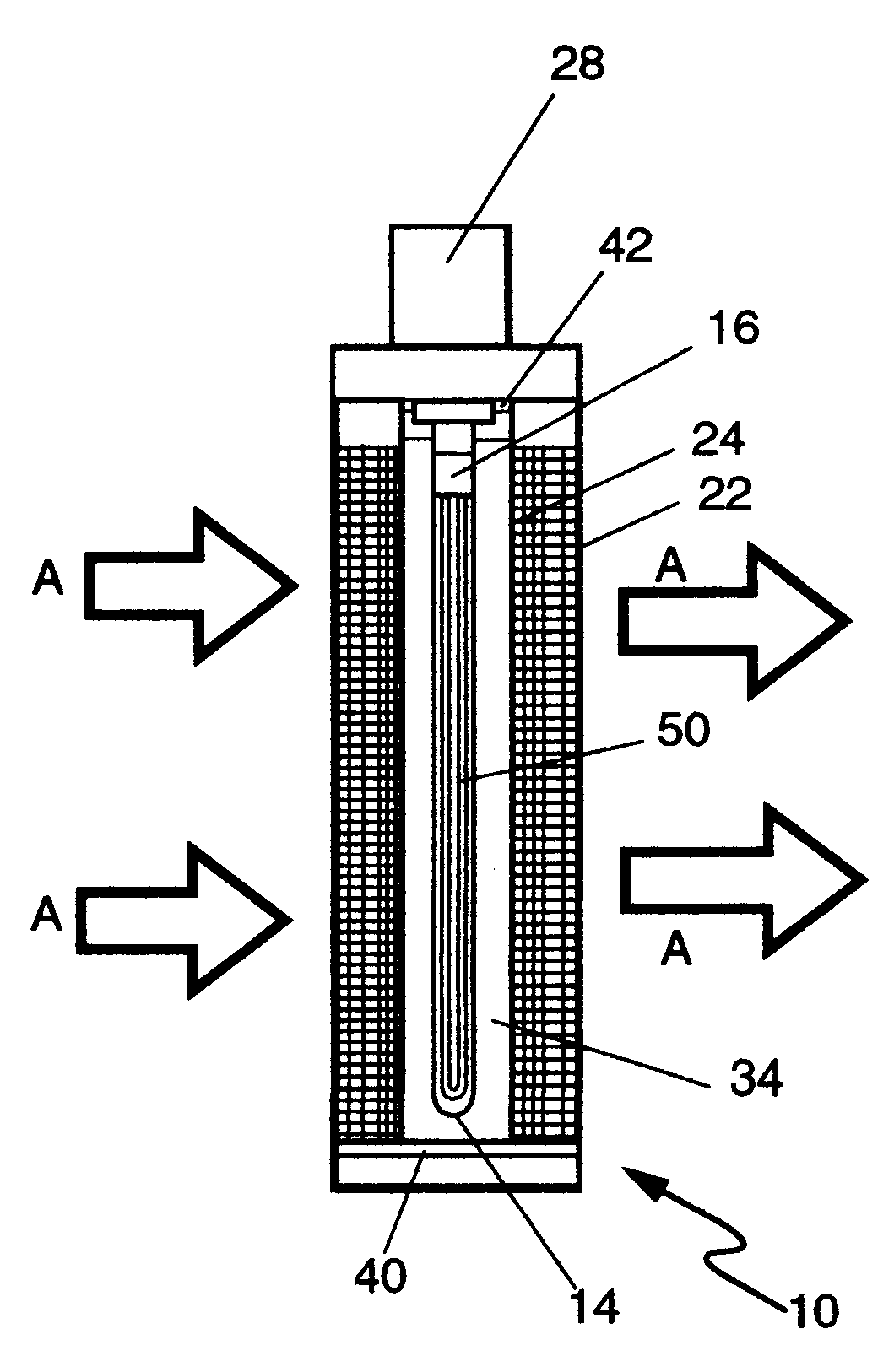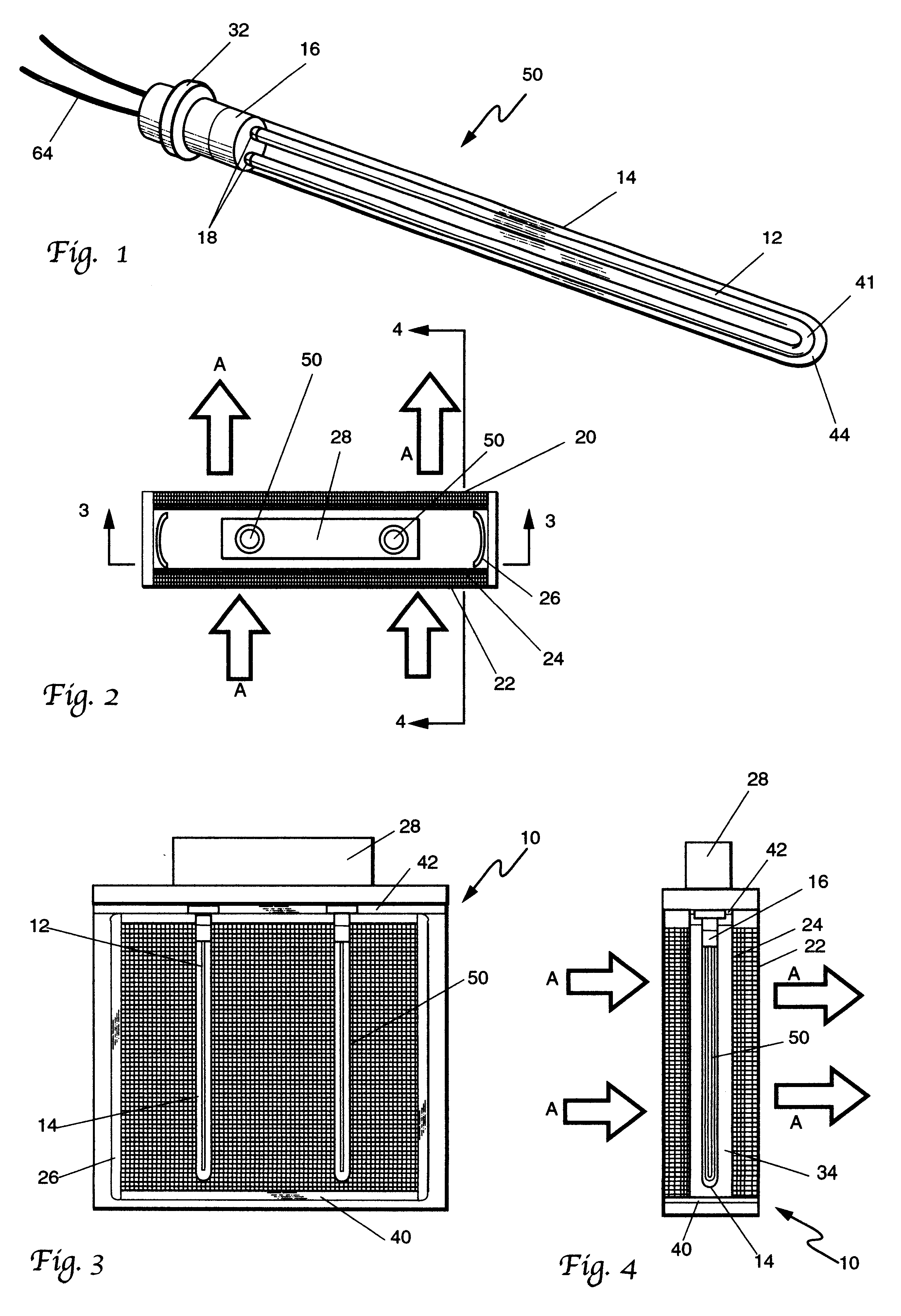Air actinism chamber apparatus and method
a technology of air actinism and chamber, which is applied in the field of ultraviolet ray actinism chamber, can solve the problems of reducing the output and service life of conventional uvc products, destroying viable organisms, and reducing the effectiveness of uvc and hvac systems, so as to enhance the bulb life of a uv bulb, and shorten the lamp length
- Summary
- Abstract
- Description
- Claims
- Application Information
AI Technical Summary
Benefits of technology
Problems solved by technology
Method used
Image
Examples
Embodiment Construction
Considering the drawings, wherein like reference numerals denote like parts throughout the various drawing figures, reference numeral 10 is directed to the air actinism chamber according to the present invention.
The invention consists of three main components: UV lamp 50, photon chamber 34 and filters 20. Each component will be described more particularly below.
As seen in FIGS. 1 and 8, UV lamp 50 consists of a U-shaped UV quartz, ruby, or sapphire crystal 12 (with quartz being preferred), a quartz sheath 14, lamp coupling overlay 16, lamp base 32, U-shaped bulb gases 41, and lamp gas 44. U-shaped bulb 12 is preferably a quartz glass tube up to fifty inches long that is bent at the center to form a U-shaped bulb filled with one or more of the following: mercury, argon, iron, gallium, xenon or krypton. Aluminum metal or ceramic material is machined for the base 32 of the lamp for holding both the lamp tube 12 and electrode igniters 18. That, preferably aluminum coupling 16 allows for...
PUM
| Property | Measurement | Unit |
|---|---|---|
| temperature | aaaaa | aaaaa |
| operating temperature | aaaaa | aaaaa |
| wavelength | aaaaa | aaaaa |
Abstract
Description
Claims
Application Information
 Login to View More
Login to View More - R&D
- Intellectual Property
- Life Sciences
- Materials
- Tech Scout
- Unparalleled Data Quality
- Higher Quality Content
- 60% Fewer Hallucinations
Browse by: Latest US Patents, China's latest patents, Technical Efficacy Thesaurus, Application Domain, Technology Topic, Popular Technical Reports.
© 2025 PatSnap. All rights reserved.Legal|Privacy policy|Modern Slavery Act Transparency Statement|Sitemap|About US| Contact US: help@patsnap.com



